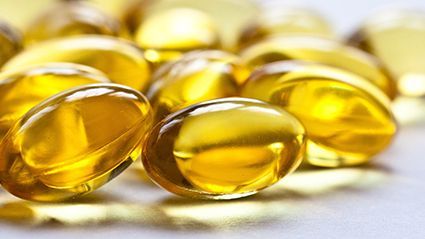THURSDAY, July 28, 2022 (HealthDay News) — Seniors who take vitamin D supplements to improve their bone health and ward off fractures are just wasting their time and money, a major new study has found.
These supplements did nothing to reduce their average risk of bone fractures, researchers found in a randomized trial testing vitamin D against a placebo.
“In generally healthy adults, these results do not support the use of vitamin D supplements to reduce fracture risk,” said lead researcher Dr. Meryl LeBoff, chief of the Calcium and Bone Section at Brigham and Women’s Hospital in Boston. “We found that supplemental vitamin D did not reduce fractures in U.S. participants.”
In the study, published July 28 in the New England Journal of Medicine, more than 25,000 older adults were randomly assigned to take either 2,000 units of vitamin D daily or a placebo, and then followed for an average of five years. The average age of participants was 67.
Nearly 2,000 bone fractures occurred among more than 1,500 participants during the study period. However, taking vitamin D appears to have had no bearing on who suffered a fracture and who didn’t.
Nearly 20% of U.S. adults currently take vitamin D supplements, researchers said in background notes, often based on blood tests that find they have “insufficient” or “deficient” levels of vitamin D.
These new results should cause both doctors and patients to question the value of routine vitamin D testing, said Dr. Steven Cummings, a professor emeritus at the University of California, San Francisco.
“Doctors routinely order vitamin D levels, and many patients hear that they are low, they’re below some level,” said Cummings, co-author of an editorial accompanying the findings. “What we needed to know is whether those people who have low levels benefit from taking vitamin D. And the answer to that is no.”
The clinical trial could shake the vitamin D market, which is worth more than $1 billion globally according to market watchers.
Vitamin D had been thought to help improve bone health because it is essential to your body’s absorption of calcium, LeBoff said.
“Mechanistically, vitamin D may support bone health and improve mineralization of bone because it increases the absorption of calcium, and 99% of calcium is stored in bone,” LeBoff said, adding that studies had also shown that the vitamin could affect bone turnover and bone formation.
In addition, some bone diseases such as rickets have been linked to a severe vitamin D deficiency in people, Cummings noted.
Most people get enough vitamin D naturally via their skin, which produces it when exposed to sunlight, LeBoff said.
It’s also found in vitamin D-supplemented milk, eggs and cereal, as well in fish like salmon, trout and tuna, she said.
Cummings believes there’s a fundamental misunderstanding of vitamin D that’s likely driving all this testing for vitamin D deficiency.
His editorial noted that more than 10 million blood tests for vitamin D levels are performed every year in the United States.
“There’s a system in your body that’s kept in balance by vitamin D that you take in, the vitamin D from your skin and the enzymes that turn it into an active form of vitamin D called D125. That system is kept in balance naturally by your body,” Cummings said.
“I think what we’re learning is that vitamin D is not a vitamin, it’s a hormone, and it’s hard to perturb that balance, to change that balance in a beneficial way,” he said.
LeBoff noted that this study did not include people with osteoporosis, a genetically driven vitamin D deficiency, or very elderly people living in residential communities.
For people in these groups, supplemental vitamin D could be helpful or essential in maintaining their bone health.
“Don’t stop your grandfather’s vitamin D, because these findings really are found in mid-life and older adults,” LeBoff said.
More information
The Mayo Clinic has more on vitamin D.
SOURCES: Meryl LeBoff, MD, chief, Calcium and Bone Section, Brigham and Women’s Hospital, Boston; Steven Cummings, MD, professor emeritus, University of California, San Francisco; New England Journal of Medicine, July 28, 2022
Copyright © 2025 HealthDay. All rights reserved.

